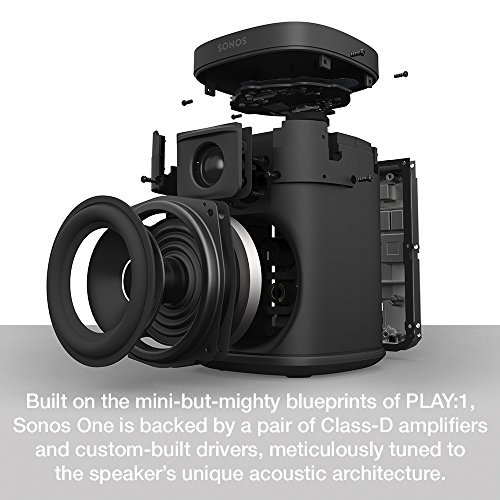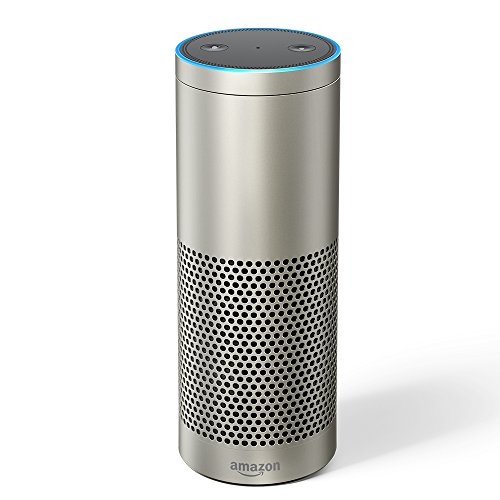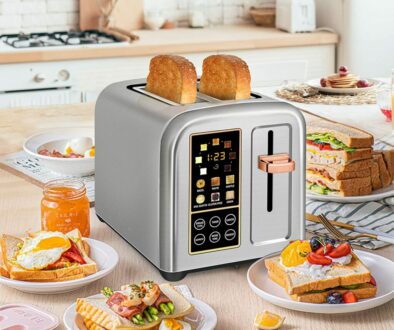The Problems with Sonos One & How It Compares with Echo Plus
The much anticipated “work with Alexa” update by Sonos for its existing multi-room wireless speakers has arrived together with Sonos One, the company’s own take on an Echo alternative. A smart speaker that inherently supports Alexa’s skillset with built-in microphones.
As much as we like Amazon’s Echo range of speakers, much is left to be desired in the sound quality department. While the new Echo Plus, an update to the first generation Echo has improved speakers albeit alike in design except for the additional colour choices (silver, black or white), it still does not produce the sound quality and bass you are hoping for.
Don’t get me wrong, the original cylindrical design is great, stylish yet simple. The water bottle profile and silver colour option is a welcome addition but even having updated the Echo with a new 2.5-inch woofer and 0.8-inch tweeter, it still can’t hold a candle to the Sonos One. The sound has improved. There is now more detail and at the same time, more punch in its bass. Tunes sound heavier and weighted with a better low range. If you have not heard the Sonos One, you might be forgiven for choosing the new Echo Plus. For existing first generation Echo owners, you can give this one a miss.
It’s worth noting that while the first generation Echo lacks audio out socket, the new Echo Plus, like its smaller siblings, the Echo Dot now spots a 3.5mm audio-out socket in case you wish to hook up your own set of speakers or HiFi system.
But, now that Alexa is also available on Sonos, in the shape of Sonos One, you have a choice. Before everyone starts celebrating, the newly launched Sonos One has a few issues to work out of its own.
Sonos One – Voice Controlled Smart Speaker with Alexa Built-in – MULTI-ROOM, WIFI
If you have heard the Sonos PLAY:1, the Sonos One sounds no different. It is basically the same speaker offering amazing room filling sound, deep and rich bass as well as crisp mid and high range with Alexa Voice Control thrown in.
If you have the Sonos PLAY:1 or have heard one before, it will live up to your expectation as audio standards go. This is easily one of the best cabinet or book shelf speakers out there and to have it also as multi-room speaker is a real bonus.
So now, not only will you get brilliant sound quality but multi-room speakers capable of taking voice commands. If you want to listen to your favourite tune, all you need to do is ask. You are no longer limited to accessing this over the Sonos app.
It may have a rough start with users complaining about respond time and accuracy when issuing commands over Sonos One as oppose to Echo but with time, we are likely to see these issues resolved via software updates. It is worth noting that when using the wake word “Alexa” you need to give it a moment to beep before you start talking.
The difference between the Sonos One and the PLAY:1 is the lack of physical buttons. This has been replaced by touch controls to set the volume, skip track and more.

It is also worth pointing out that Sonos One does not have as many microphones as that found on Amazon’s echo. Also, the integration is not completely seamless as you will need to download the Alexa app as well as the Sonos app to configure the speaker properly but we like to think that each app has its own features and advantages and to keep them separate is best so they are not in a muddle. Sonos One pumps out excellent sound quality that is unsurpassed by any speakers from Amazon’s Echo range.
The advantage of Sonos is its ability to not only access a variety of online streaming music services but to index your local music on your NAS (network attached storage) and create a searchable library. The search also includes music from your online streaming subscriptions, making the Sonos app a one stop shop for all the available music on the same app window. Frequent app update sees plenty of improvement in the ease of use department and stability.
The biggest advantage with Sonos is the multi-room function. Put all your Sonos speakers in a group and every room will be playing from the same source, blasting out your favourite tunes in unison so you can listen to it as you move from room to room. That dream of imitating the department store sound system or having total control over all the speakers under one roof is closer than you think. We can safely say that it is easily the best multi-room system we have seen thus far.

Go beyond music
With Sonos One, you can access Amazon Alexa skills and control your smart home devices, check on the traffic, listen to your daily briefing, access your to do list and shopping list, manage your schedule, basically perform every trick in the Echo’s play book, simply by asking.
But for most, the sole reason for going with a Sonos speaker, be it Sonos One or any other Sonos for that matter is so you can enjoy your music, which is what these speakers are designed for, with Alexa or otherwise. We know Sonos One is great for music but is it good enough as a smart speaker?
Some issues raised by early adopters
Here are some of the issues faced by early adopters, we have summarised them below. Note that at the time of publication some of these issues may have already been resolved.
- Cannot change the default wake word
- Need to pause for indicator light after wake word before issuing command
- Scheduled late release support for Spotify Voice control with Alexa
- Voice recognition sensitivity is an issue that hopefully will be resolved with future updates
- Does not support all Alexa skills. Cannot call or use the drop in function
- Won’t pair with regular Sonos speakers. Pairing is limited to Sonos Ones
- Using two apps, Sonos and Alexa to configure one device
- No support to own library of music using voice control, only streaming services
The last point is understandable as it would mean indexing your personal library and adding voice control which is not part of Alexa’s program.
At the point of publishing, these issues may already have been addressed. Please check with Sonos Support and community forum and keep your Sonos One updated using the Sonos App on your tablet or mobile.
Moving On
While Sonos is working on rolling out updates that will ultimately ironing out some if not all the issues mentioned above, we hear Google Assistant support is also on the cards. What this means is that the speaker will not only serve up Alexa’s voice activated services but Google Assistant and ultimately the search giant’s AI. You can expect Google Assistant in 2018.
I already have Sonos PLAY:1, PLAY:3 or PLAY:5, how do I get Alexa on there?
No you don’t. Existing Sonos speakers does not have Alexa Built-in but can work with Echo Dot, new Echo and Echo Plus wirelessly with a firmware update. Using the Alexa app, detect and add the multi-room speakers under Smart Home. Give the devices a label such as “Living Room” or “Kitchen”. You can then issue a command to your Echo speaker to play music on the speakers hands-free instead of using the Sonos App e.g. “Alexa, play Top Pops station in the Living Room”. This again is limited to Alexa controlled streaming services and does not support your personal library. You have the Sonos app for that.
Final Thoughts
Whatever the integration issues are between Sonos One and Alexa, there is no denying that the Sonos One is still a brilliant multi-room speaker taking baby steps towards being the ultimate smart speaker everyone deserves. What is got right is the sound quality, the ability to stream from pretty much anywhere, the integration with Alexa so you can ask for tunes to be played in the different rooms and most importantly, the flexible Sonos app that lets you control it all if you do not already have Sonos One.
Related Articles
- Bluetooth Support for Sonos – how to connect via Bluetooth
- Sonos Play:1 Starter Set – two is better than one
- Sonos PLAY:1 Speaker – the compact multi-room wonder













